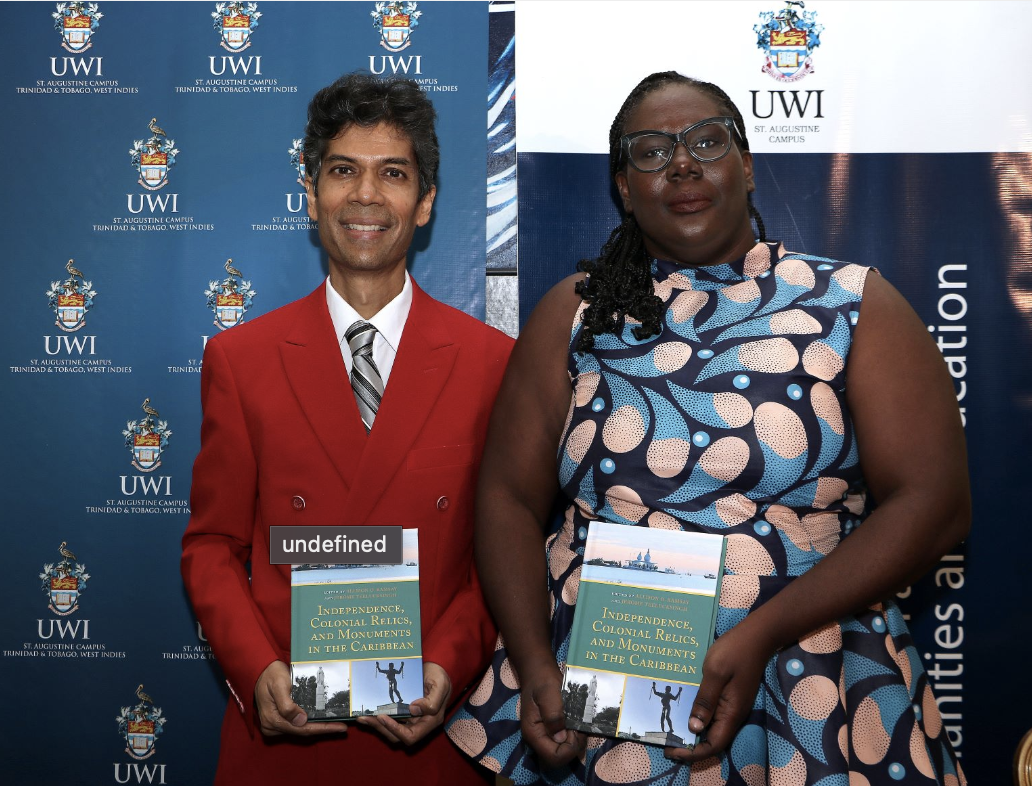ST. AUGUSTINE, Trinidad and Tobago – As Trinidad and Tobago prepares to commemorate 62 years of independence on August 31, and following African Emancipation Day celebrations on August 01, the Department of History of The University of the West Indies (UWI), St. Augustine Campus explores the meaning of freedom, autonomy, and independence in their recently launched book, Independence, Colonial Relics and Monuments in the Caribbean.
The publication was edited by Drs. Allison Ramsay and Jerome Teelucksingh, and is described as an extension of the discourse surrounding the Black Lives Matter movement by Acting Head of the History Department Dr. Debbie Mc Collin. She states that as historians, the Department recognizes its responsibility to put into context the stories of enslaved Africans’ resistance, labour and social protests in the 19th and 20th centuries, and the Black Power movement of the 1970s. The book aids in understanding these phenomena as Dr. Mc Collin notes that “the Black Lives Matter movement led to further questions about our representation of self in our public spaces and calls for the removal and destruction of colonial monuments; it raised questions about the visible and invisible wounds inflicted by our colonial past, for all groups.”
Senior lecturer Dr. Jerome Teelucksingh firmly believes that Caribbean history must be accurately depicted. He cautions that removing relics of our colonial past to forge new beginnings is as complicated as it is controversial because the connected history – be it good or bad – may remain even after their removal. Dr. Teelucksingh states that we must learn from our past as “we live in an era with the words- cancel culture, woke and being politically correct. We are living in a historical moment that will affect the future.”
Echoing similar views, lecturer and co-editor Dr. Allison Ramsay notes that history comes in patterns involving injustice, inequality, and strategies of resistance. She advises that students in the Caribbean should be grounded in our history, especially at the primary and secondary school levels. Dr. Ramsay assures that “Independence, Colonial Relics and Monuments in the Caribbean is an enjoyable read that is suitable for a wide range of audiences and persons with a range of interests in history, heritage studies, cultural studies, Caribbean studies, post-colonial studies, and the list goes on.” It would be a useful resource for tertiary, CSEC and CAPE students as well.
Ms. Shian Albert, a secondary school teacher and author of the chapter titled “The Survival of Hinduism: In the Case of Temple in the Sea, Triveni Mandir, and Brothers Road Hindu Mandir,” emphasized the importance of providing the general public, especially Caribbean youth, with easy access to information to gain knowledge about local histories, communities, and monuments. She highlighted the many unsung heroes who have sacrificed for these monuments. “As a young student myself in the past, it was always difficult to find established literature about my community and the villages surrounding it, so I used this chapter to fill that grey area,” said Ms. Albert.
Independence, Colonial Relics and Monuments in the Caribbean contains contributions from seasoned, mid-career, and more recent scholars from Barbados, Curacao, Jamaica, and Trinidad and Tobago who reference these and other territories in our region.

